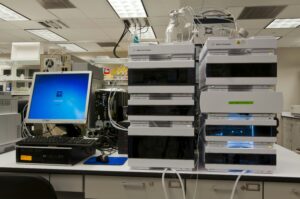
In a financial landscape where the Reserve Bank of Australia (RBA) continues to reduce the cash rate, investors are increasingly turning their attention to ASX shares that offer robust dividend yields. With traditional low-risk assets like savings accounts and term deposits becoming less attractive, high-dividend stocks present a compelling alternative for those seeking passive income and long-term capital growth.
Two standout ASX shares, APA Group and GQG Partners Inc, currently offer dividend yields significantly above the RBA cash rate, making them appealing choices for investors. Both companies not only provide substantial payouts but also exhibit strong business fundamentals that could underpin future growth.
APA Group: A Pillar in Australia’s Energy Sector
APA Group (ASX: APA) stands as one of Australia’s largest energy asset owners, boasting an extensive gas pipeline network that transports half of the nation’s gas usage. This makes APA a critical player in the Australian economy, with diversified investments spanning electricity transmission, renewable energy generation, gas storage, and more.
The company’s strategic focus on its core competency—gas pipelines—has allowed it to consistently expand its asset base and enhance cash flow. Most of APA’s revenue is inflation-linked, which has been instrumental in offsetting rising interest costs. This financial structure supports the company’s ability to maintain and increase its dividend payouts.
Over the past two decades, APA has consistently raised its distribution, a trend it expects to continue with a projected increase to 58 cents per security by FY26. At the time of writing, this equates to a dividend yield of 6.6%.
“APA’s diversified approach and consistent revenue growth make it a strong candidate for investors seeking reliable income streams,” said an industry analyst.
GQG Partners: Navigating Market Volatility
GQG Partners Inc (ASX: GQG), a prominent fund manager on the ASX, has experienced a 14% decline in share price over the past month. However, this volatility is not uncommon for fund managers, whose funds under management (FUM) are closely tied to market performance.
Despite these fluctuations, GQG has demonstrated a strong track record of long-term outperformance. The company currently adopts a defensive investment strategy, positioning itself for potential market corrections. This prudent approach has not hindered its growth; in the FY25 half-year results, GQG reported a 16.8% increase in average FUM to US$162.9 billion and a 12.7% rise in distributable earnings to US$236.5 million.
Moreover, GQG declared a 14.5% increase in dividend per share to US 7.34 cents. Should this dividend be maintained in the second half of 2025, it would result in a yield close to 13%, potentially outperforming the S&P/ASX 200 Index.
“GQG’s ability to maintain its FUM and earnings positions it as an underrated choice for investors, particularly if its funds continue to outperform benchmarks,” noted a financial expert.
Implications for Investors
The high dividend yields offered by APA Group and GQG Partners highlight the potential for these shares to provide both income and growth in a low-interest-rate environment. As the RBA continues its monetary policy adjustments, investors may increasingly look to such high-yield opportunities to bolster their portfolios.
While high dividend yields can be attractive, investors should also consider the underlying business fundamentals and market conditions. APA’s strategic asset expansion and GQG’s defensive positioning offer promising prospects, but market volatility and economic shifts remain key factors to monitor.
As these companies continue to navigate their respective sectors, their performance will be closely watched by investors seeking reliable returns in an evolving financial landscape.
In conclusion, APA Group and GQG Partners present compelling cases for inclusion in a diversified investment strategy, offering potential for both income and capital appreciation in the years ahead.







